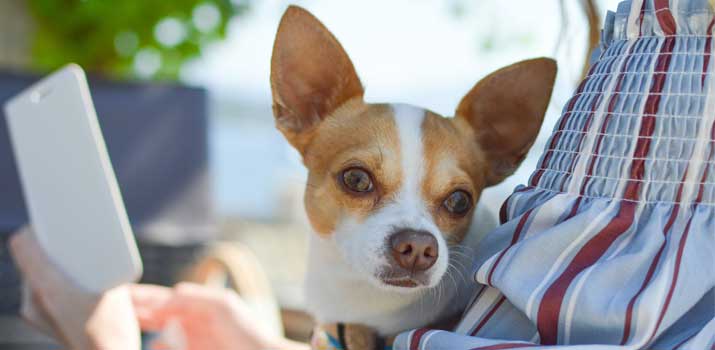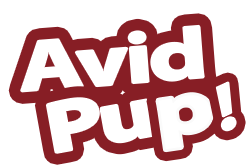
If your dog suffers from frequent yeast infections, you know the struggle they can cause all too well.
Many infections start as nothing more than some skin irritation. However, they can quickly get out of hand. In many cases, they can become a chronic problem that continually plagues dogs for years to come.
Veterinarians will tackle yeast infections in many different ways. They may provide topical creams, anti-fungal skin treatments, and prescription medications.
Experts also agree that dietary changes can make a drastic difference in the frequency of yeast infection breakouts.
Yeast infections can occur for many different reasons. However, what your dog eats might inadvertently feed the unwanted yeast!
By making some dietary changes, you could reduce the frequency of outbreaks and provide some much-needed relief.
Why Yeast Infections Happen
There are many misconceptions about yeast infections. They’re more common than people think.
That’s because the yeast and fungus that cause these infections are always on the skin!
The yeast is called Malassezia. It’s naturally occurring and lives on the skin of many animals. Both you and your dog have it!
Issues arise when the Malassezia yeast becomes abundant. It can get out of control when conditions are just right.
Yeast infections tend to occur in warm and humid conditions. Common infections site include the ears, skin folds, and more.
When water is introduced into the mix, infections proliferate quickly.
But it’s not just environmental factors that come into play.
How Dog Food Plays a Part in Yeast Buildup
Yeast needs fuel to survive. It has to have a continual supply of energy to spread and grow. What fuel does Malassezia need? The yeast thrives on sugar.
We’re not talking about table sugar here. Malassezia utilizes glucose that you get from starches and carbohydrates.
As your body converts carbohydrates into sugars, the yeast takes advantage of it to grow and spread. Before you know it, your dog has a yeast infection.
Unfortunately, low-quality carbs are pretty standard in traditional dog foods. They act as cheap fillers. While they can fill your dog up, they don’t offer much in terms of nutritional content.
They’re essentially empty calories that do nothing but feed the yeast living on their skin!
An anti-yeast diet can change all of that.
A homemade or modified diet aims to deprive the yeast of the food it needs to grow out of control.
You don’t have to avoid starches or carbs altogether. But, you can reduce the prevalence of those ingredients in favor of better alternatives.
Ways to Adopt an Anti-Yeast Diet
Making a few dietary changes can make all the difference and put your dog on the path to a life free of uncomfortable yeast infections.
Here are a few suggestions worth considering.
Switch to Raw Food
Raw diets are great for dogs that suffer from yeast infections. They’re modeled after the meat-based diets that wild dogs and your pup’s ancestors survived on.
In the wild, dogs didn’t eat processed foods filled with carbs. They survived on meat alone!
You can recreate a similar diet and take complete control over what your dog puts into its body.
Stick to wholesome meats and use organs to provide some much-needed vitamins and minerals.
Try Limited Ingredient Commercial Formulas
While a raw diet might be ideal, it’s not always practical for every dog owner. If that’s the case, you can try a limited ingredient commercial diet.
These foods are formulated with as few ingredients as possible. As a result, they contain far fewer carbohydrates.
Most of the nutritional density is devoted to protein, so fillers are the first to go.
Avoid Overly-Processed Products
Super processed foods are, unfortunately, hard to avoid these days. Everything is produced on a massive scale.
As a result, manufacturers turn to processed ingredients and unnecessary additives.
Check your dog food’s ingredient list and avoid anything that contains too much processed junk.
Avoid foods that include things like high fructose corn syrup and excessive starch. Corn fillers are cheap and can help with things like preservation and flavor.
However, they’re also awful sources of extra sugar. Avoid heavy processing and stick to natural, limited-ingredient foods that are made in smaller batches when possible.
Ingredients to Avoid
In addition to heavily processed additives, it’s best to avoid anything that contains natural sugars.
Steer clear of high-starch foods and carb-based recipes. If you see a lot of potatoes and rice in the mix, it means that the food has numerous carbs to convert into sugar.
The same goes for grains. Grain-free recipes are a point of contention among dog owners. Despite all of that, we do know that too many grains can lead to excess blood sugar.
If your dog has a yeast infection problem, grains are the last thing they need.
Ingredients to Look For
Whether you decide to make your dog’s food from scratch or buy it as dry kibble, look for wholesome ingredients.
Your dog’s diet should be predominantly protein.
Look for wholesome and identifiable meats. Unprocessed foods that are chock-full of probiotics and digestible ingredients are a plus.
Good ingredients ensure that your dog’s body takes full advantage of the nutrients food has to offer without the excess sugar conversion to feed yeast.
Homemade Dog Food Recipe for Yeast Infections
Looking to take matters into your own hands? Making your dog’s food from scratch lets you make ingredient decisions that benefit their overall health.
Rather than questioning and making guesses, you can know for sure that your meals aren’t feeding the yeast!
This recipe is simple and contains only a handful of wholesome ingredients.
One ingredient that might come as a surprise is garlic. Garlic is primarily considered to be toxic in the dog community.
While large amounts can cause some severe health problems, it’s beneficial in moderation.
Garlic contains anti-fungal properties, so adding it to a homemade recipe can do wonders to keep infections at bay.
What You’ll Need
- 3 pounds of chicken thighs
- 2 chicken bouillon cubes
- 2 garlic cloves
- 1 pound of mixed frozen vegetables
When choosing the vegetable mix, make sure to select a frozen product that doesn’t contain onions or anything else that’s harmful to dogs.
You’re already using garlic, so you don’t want to overdo things!
Making the Recipe
Start by deboning the chicken and removing the skin. You can also dice the garlic. Then, whip out your slow cooker!
This is a “set it and forget it” kind of recipe. Once you prepare the ingredients, you can leave the slow cooker to work its magic for several hours.
Place the chicken, garlic, and bouillon cubes into the slow cooker.
Add enough water to cover the ingredients. Set the machine on the lowest setting and let everything cook for about six hours.
After the six-hour mark, add the frozen vegetables and let the food cook for an additional 30 minutes.
Let the food cool completely before feeding your dog. If you have any leftovers, put the food in an airtight container and pop it in the fridge.
It’ll be suitable for another six days or so.
Conclusion
Adjusting your dog’s diet can make a world of difference. It deprives yeast of the fuel it needs to grow, resulting in fewer infections in the future.
Make these changes gradually. Take some time to transition your pup slowly to avoid any stomach upsets.
Once they adapt to their new diet, your dog will be happier and much healthier!
Also Read: Best Rated Large Breed Puppy Foods

